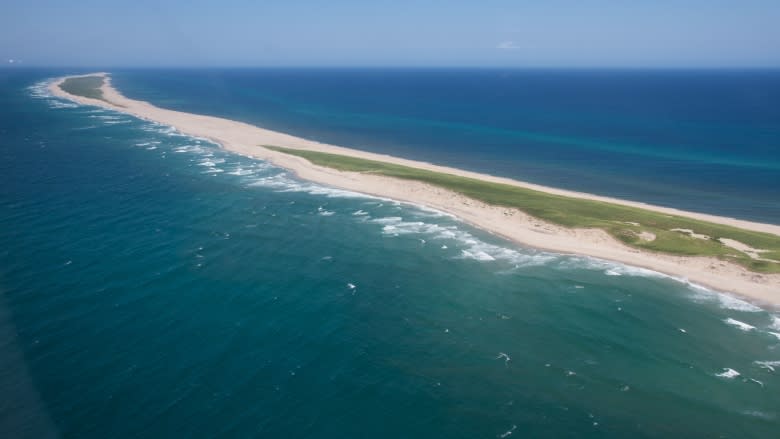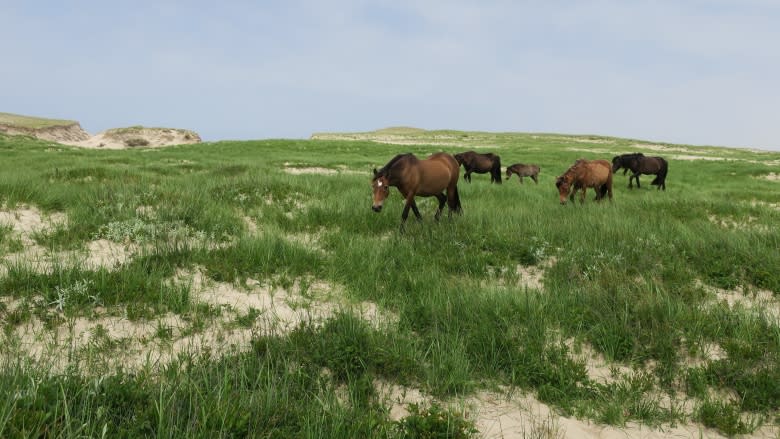Researchers scramble to understand threatened Sable Island sweat bee
The survival of an ant-sized bee may seem unimportant, but when its sole habitat is on Sable Island, researchers take notice.
The Sable Island sweat bee was listed as a threatened species in 2017 by the Nova Scotia Department of Natural Resources. Since then, researchers have studied the insect in the hopes of saving it.
Zoe Lucas, president of the Sable Island Institute, has conducted research on the island for 40 years, including a long-term study of the relationships between plants, insects, birds and horses.
She is working on identifying the bees' foraging plants, locating their nesting sites and monitoring their population.
"The sweat bee is basically the size of an ant with wings. They're tiny, and so it's going to take some time to locate," she said.
The bee is vulnerable because it depends on the island for survival, Lucas said. Sable Island sits about 300 kilometres off the coast of Nova Scotia and the sandbar never gets wider than 1.5 kilometres.
The Department of Natural Resources says because the bee's population is limited to the island, it can be threatened by a single-event physical disturbance such as a catastrophic weather event. Other threats include the introduction of invasive species and bee-attacking insects.
Lucas said conserving the sweat bee, which pollinates other plants, protects the overall habitat of the island and its other species.
"It's all about conservation and biodiversity," she said. "Biodiversity has been identified as something we need to take very seriously and there's a serious concern about loss of diversity on the planet."
Dave Shutler, a biologist at Acadia University who studies bees, visited Sable Island last summer and said the sweat bee's role on the island is crucial.
"It's conceivable in the absence of sweat bees that there are a number of species of plants that might just go belly up after a while," he said.
He said island species in general can be vulnerable.
"They hadn't the opportunity to co-evolve with all kinds of competitors and predators, so island populations are often more susceptible than mainland populations."
Dan Kehler, the park ecologist for Sable Island National Park Reserve, said measures have been taken to protect the sweat bee, such as environmental assessments and figuring out how to manage visitors to the island.
"The sweat bee is a pollinator and that plays an important role in ecosystems for the vegetation," Kehler said. "Parks Canada carefully manages visitation to help protect the sweat bee and the other species."
'Special place'
Sable Island offers more than scientific research. The island is special to many for its wild horses, birds, shipwrecks, history and the people who have lived on the island.
Lucas may be the island's longest-term inhabitant.
She feels fortunate to have spent so much time living and working on the island.
"It's a unique opportunity and the island is an incredibly special place. I still find days when I'm just swept away by something that I've experienced."



